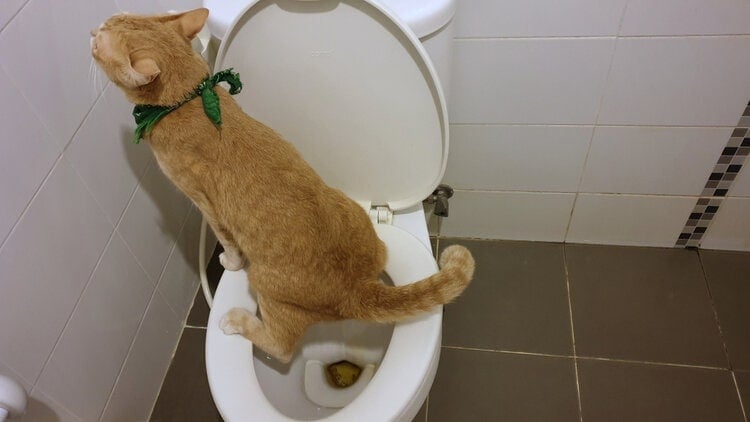Reasons You Shouldn't Flush Cat Poop Down Your Toilet - Preserve Your Pipe Health
Reasons You Shouldn't Flush Cat Poop Down Your Toilet - Preserve Your Pipe Health
Blog Article
Nearly everybody may have their own unique thinking when it comes to How to Dispose of Cat Poop and Litter Without Plastic Bags.

Intro
As feline owners, it's vital to bear in mind how we take care of our feline friends' waste. While it may seem hassle-free to flush cat poop down the bathroom, this technique can have damaging consequences for both the atmosphere and human wellness.
Ecological Impact
Flushing feline poop presents hazardous microorganisms and parasites into the water system, posturing a significant risk to marine ecosystems. These pollutants can negatively affect aquatic life and concession water top quality.
Wellness Risks
Along with ecological problems, flushing cat waste can also posture wellness dangers to people. Cat feces might have Toxoplasma gondii, a bloodsucker that can trigger toxoplasmosis-- a possibly serious disease, particularly for expectant ladies and people with damaged immune systems.
Alternatives to Flushing
The good news is, there are much safer and more liable ways to throw away pet cat poop. Consider the adhering to options:
1. Scoop and Dispose in Trash
One of the most typical method of disposing of cat poop is to scoop it into a naturally degradable bag and throw it in the garbage. Be sure to make use of a devoted trash inside story and throw away the waste quickly.
2. Usage Biodegradable Litter
Go with eco-friendly cat litter made from materials such as corn or wheat. These litters are environmentally friendly and can be securely taken care of in the garbage.
3. Bury in the Yard
If you have a yard, take into consideration burying feline waste in a designated area far from vegetable gardens and water sources. Make sure to dig deep enough to avoid contamination of groundwater.
4. Set Up a Pet Waste Disposal System
Invest in a family pet garbage disposal system specifically designed for pet cat waste. These systems utilize enzymes to break down the waste, lowering smell and environmental effect.
Conclusion
Responsible family pet possession prolongs past supplying food and sanctuary-- it likewise entails appropriate waste management. By avoiding purging cat poop down the commode and selecting different disposal approaches, we can minimize our environmental impact and shield human health.
Why Can’t I Flush Cat Poop?
It Spreads a Parasite
Cats are frequently infected with a parasite called toxoplasma gondii. The parasite causes an infection called toxoplasmosis. It is usually harmless to cats. The parasite only uses cat poop as a host for its eggs. Otherwise, the cat’s immune system usually keeps the infection at low enough levels to maintain its own health. But it does not stop the develop of eggs. These eggs are tiny and surprisingly tough. They may survive for a year before they begin to grow. But that’s the problem.
Our wastewater system is not designed to deal with toxoplasmosis eggs. Instead, most eggs will flush from your toilet into sewers and wastewater management plants. After the sewage is treated for many other harmful things in it, it is typically released into local rivers, lakes, or oceans. Here, the toxoplasmosis eggs can find new hosts, including starfish, crabs, otters, and many other wildlife. For many, this is a significant risk to their health. Toxoplasmosis can also end up infecting water sources that are important for agriculture, which means our deer, pigs, and sheep can get infected too.
Is There Risk to Humans?
There can be a risk to human life from flushing cat poop down the toilet. If you do so, the parasites from your cat’s poop can end up in shellfish, game animals, or livestock. If this meat is then served raw or undercooked, the people who eat it can get sick.
In fact, according to the CDC, 40 million people in the United States are infected with toxoplasma gondii. They get it from exposure to infected seafood, or from some kind of cat poop contamination, like drinking from a stream that is contaminated or touching anything that has come into contact with cat poop. That includes just cleaning a cat litter box.
Most people who get infected with these parasites will not develop any symptoms. However, for pregnant women or for those with compromised immune systems, the parasite can cause severe health problems.
How to Handle Cat Poop
The best way to handle cat poop is actually to clean the box more often. The eggs that the parasite sheds will not become active until one to five days after the cat poops. That means that if you clean daily, you’re much less likely to come into direct contact with infectious eggs.
That said, always dispose of cat poop in the garbage and not down the toilet. Wash your hands before and after you clean the litter box, and bring the bag of poop right outside to your garbage bins.
https://trenchlesssolutionsusa.com/why-cant-i-flush-cat-poop/

Do you enjoy reading about How to Dispose of Cat Poop and Litter Without Plastic Bags? Try leaving feedback below. We will be glad to know your suggestions about this piece. Hoping that you come back again in the near future. Sharing is caring. You won't know, you will be helping someone out. I appreciate reading our article about Don’t flush cat feces down the toilet.
Visit Homepage Report this page